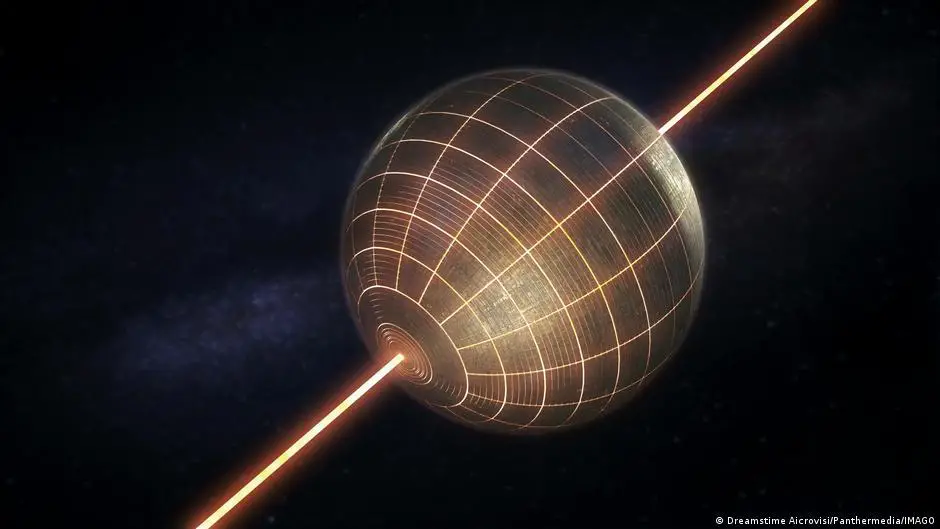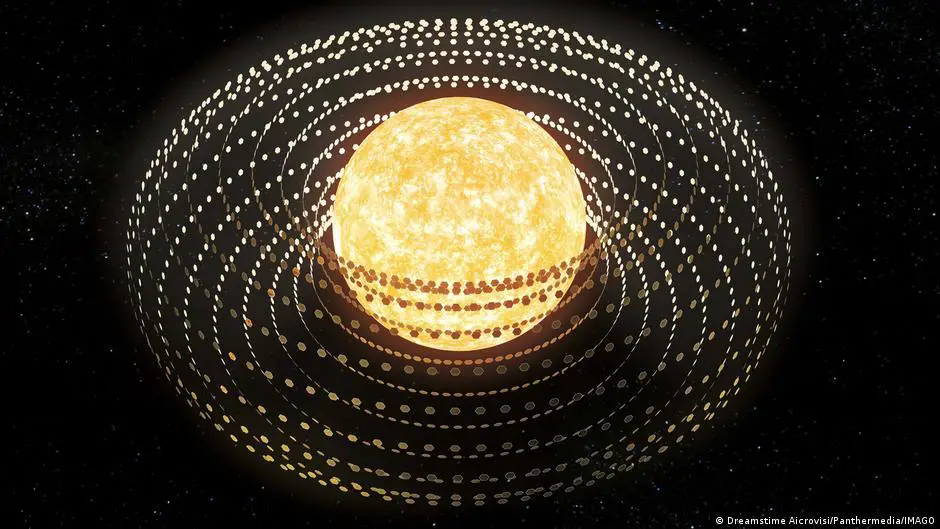- A potentially habitable exoplanet discovered a short distance from Earth
- A rare planetary alignment is about to happen: here’s how you can watch it from home

In the vast field of astronomical research, few areas capture the public’s imagination as much as the search for other civilizations in the cosmos. Although some might consider this pursuit a futile endeavor, human curiosity seems to know no bounds.
In this context, an international team of researchers has analysed millions of stars in our galaxy, identifying intriguing infrared heat emissions coming from some of them. This finding has led us to think that we may already be facing the first evidence of extraterrestrial civilizations using a massive structure known as a Dyson sphere to capture energy from their stars.
As is often the case with research of this nature, it is premature to consider that the new study offers conclusive evidence for the existence of advanced civilizations, given that the observations could have more common and less spectacular explanations.
However, the results of the scientific team, which has published a new study in the journal Monthly Notices of the Royal Academy of Sciences under the title Project Hephaistos – II. Gaia DR3’s Dyson sphere candidates, 2MASS, and WISE open the door to the fascinating possibility of identifying where and how civilizations handling this level of technology might exist in the vast universe.
Dyson Spheres
This concept, proposed in the 1960s and named after physicist Freeman Dyson, describes theoretical structures capable of surrounding a star and harnessing its energy. This type of technology would imply an advanced level of development as a civilization, namely Level II of the Kardashev Scale, which classifies civilizations according to their ability to handle energy.
These spheres could serve as technomarkers, so the international team of researchers, led by Matías Suazo, a PhD student in the Department of Physics and Astronomy at Uppsala University in Sweden, developed the Hephaistos Project, named after the Greek god of fire and metallurgy. According to his hypothesis, these objects should emit a detectable infrared glow, the technomarker that could indicate the presence of extraterrestrial life.
“In this study, we present a comprehensive search for partial Dyson spheres by analyzing optical and infrared observations of Gaia, 2MASS, and WISE,” the authors write.
These large-scale astronomical surveys have generated vast volumes of data on individual stars. “This second work (the first was published in May 2022) examines Gaia DR3, 2MASS, and WISE photometry from approximately 5 million sources to build a catalog of potential Dyson spheres,” they explain.
Anomalous signals in red dwarfs
Specifically, the scientists identified an excess of infrared radiation unexplained by known natural processes in seven red dwarfs located less than 900 light-years from Earth. These stars, smaller and dimmer than the Sun, appeared up to 60 times brighter in the infrared than expected.
“The most fascinating explanation might be the existence of Dyson spheres,” Suazo told New Scientist.
According to the scientific media, this excess could be caused by something with a temperature of about 25 °C, consistent with a Dyson sphere. Up to 16% of each star would have to be obscured to explain the signal, suggesting the possible existence of a Dyson swarm, a variant of the sphere consisting of large satellites orbiting a star to collect energy.

“After analyzing optical/NIR/MIR photometry from approximately 5 million sources, we found 7 apparent M dwarfs showing an infrared excess of unclear nature that is compatible with our Dyson sphere models,” the researchers write.
Although there are natural explanations for this infrared excess, according to the scientists, none seem to clearly explain the phenomenon in these candidates, especially given that they are all M dwarfs.
Possible alternative explanations
Alternatively, a natural explanation could be that stars are surrounded by disks of planet-forming debris, but most of these stars look too old for that. Another possibility is that each star is coincidentally aligned with a distant galaxy that emits infrared radiation. It’s also possible that infrared signals are the result of an unknown natural process.
“It could be something very rare, like the collision of two planets producing a lot of material,” suggests David Hogg of New York University to New Scientist. “I think it’s most likely a natural phenomenon,” he adds.
The research continues, and the James Webb Space Telescope could offer new insights into these mysterious findings. In the meantime, the team reaffirms the need for further analysis to clarify the true nature of these infrared emissions, keeping the door open to the possibility of one day finding evidence of intelligent life beyond Earth.
“Further analysis is definitely needed to unveil the true nature of these sources,” the astronomers conclude in their new study.
With information from New Scientist, Universe Today and Monthly Notices of the Royal Academy of Sciences.

Comments